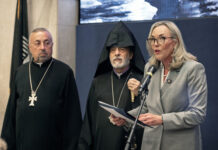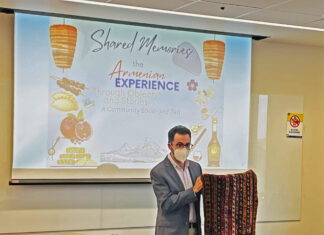BOSTON (Boston Globe) — When the Old State House’s century-old time capsule was opened last fall, the red hardback book found inside, a routine government report, was dismissed as a mere space-filler.
Now it appears that the book’s curious inclusion was anything but an afterthought. With a corner carefully folded on a page that describes an attack against Armenians by Ottoman Turks, the volume is seen as delivering a message, a call to remember from the distant past.
It was an Armenian coppersmith, Moses Gulesian, who was commissioned in 1900 to replace the wood figures of a lion and unicorn on the east facade of the building. When his work was completed, he placed the time capsule — a copper box filled with letters, photographs, and newspaper articles from the time — inside the lion’s head.
“One of the last things he did was to seal a copper box,” reported a Boston Daily Globe article from 1901.
But not before he placed the thick tome inside, nestled snugly atop the other objects as if it had been cut to size. When the capsule was opened, the book, which contained a summary of US foreign relations from 1896, was the first item seen.









